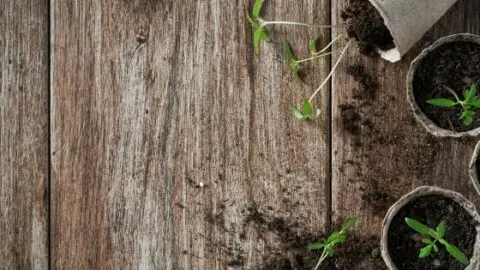Table of Contents
You are reading this article because you want to learn more about peat moss and how to use it in your garden or indoor plants.
Peat moss is a common medium for planting seedlings in the gardening sphere. People with sound gardening know-how have probably heard of it in multiple instances. Therefore, as a gardening staple with a salient nature, we must de-mystify it.
What is Peat Moss?
Peat moss is the characteristic dark brown fibrous material resulting from the decomposition of organic material and sphagnum moss in peat bogs. It is a soft, light variant of regular soil with a crumbly feel. Sphagnum peat moss can hold 20 times its weight in water.
Sphagnum moss is a moss that is part of the Sphagnaceae family, with over 300 different mosses.
Regions where sphagnum moss thrives contribute to the development of bogs and fens, as both living and deceased moss can retain water. The gradual expansion of bogs extends into arid zones.
Eventually, live moss grows over the layer of dead moss, and the dead moss contributes to the formation of peat used as a gardening medium. This decomposition process is a natural procedure that occurs without air. It takes thousands of years to complete.
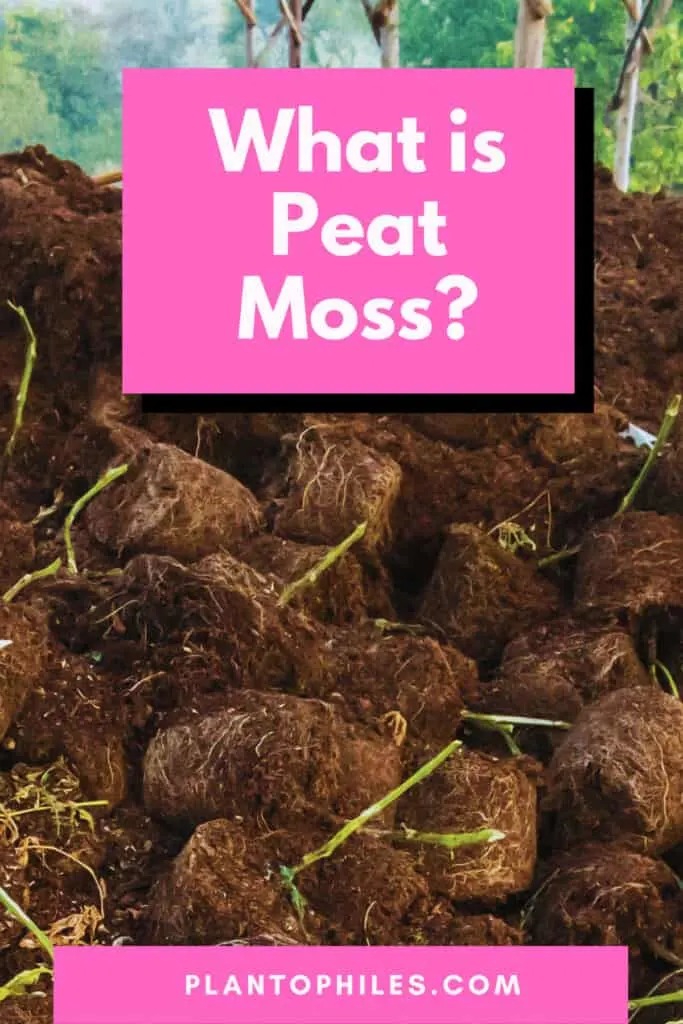
Sphagnum Peat Moss Acidity
| pH Range | Classification |
|---|---|
| 0 – 6.9 | Acidic |
| 7 | Neutral |
| 7.1 – 14 | Alkaline (Basic) |
Sphagnum peat moss is strongly acidic, with a pH level of 3.0–4.0. Every pH below 6.5 is considered acidic, and everything below 5.5 is strongly acidic. This means that the pH level is lower than most soils and that it reduces the pH. A pH level between 6.5-7.5 is considered neutral. According to the Queensland Government, a pH above 7.5 is considered alkaline.
The high acidity of peat moss makes it ideal for lowering soil pH and works best for plants that prefer acidic soils.
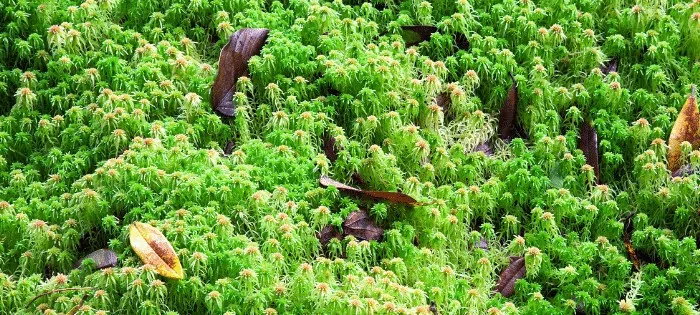
How to Use Peat Moss
- Before adding it to the soil, measure the soil’s pH value. Since peat moss is highly acidic, you should know what you plan to grow in the soil. Study acid-loving plants and plants that require alkaline soil conditions for growth so that you can distinguish between the two.
- The next step is to wet the moss thoroughly, remove as much as you need in a bucket, and set aside the remaining amount. You’ll now have to add more water and stir alternatively between each addition of water, giving the mixture ample time to rest and soak the water. Add enough water until you can squeeze out a handful of water from the moss. This step is crucial in the preparation because leaving it dry will repel water exposure, disturbing the soil structure.
- Once the moss is prepared, apply a layer in your garden. This layer shouldn’t be thicker than 3 inches; blend it with 12 inches of soil (30 cm).
- If you are planting in containers and raised beds, it is suggested that you use around 1/3 or 2/3 of peat moss mixed with compost or potting soil.
Any amendments made to the soil increase its fertility and improve quality by providing essential nutrients. Similarly, peat moss is one of the key soil ingredients that improve soil health in beds and planters. The crumbly texture and fiber-based structure allow peat to absorb a lot of water content and nutrients and release it at intervals as needed.
However, understanding the advantages and disadvantages of peat before formally using it in our garden soil is of utmost importance. It will not only allow us to make an informed decision but also help us understand the structure of our soil further.
The Benefits of Using Peat Moss
The beneficial side of peat offers a vast range of pros that serve the garden and the entire environment. Here are some of the most common benefits:
1. Soil Quality
As a soil amendment, peat moss is known to improve soil quality. As known, soil compaction harms gardens, reducing water absorption and adversely affecting plant growth. By resisting compaction, it ventilates oxygen deep into the soil bed. This phenomenon is commonly referred to as Aeration.
For dense soils, aeration allows proper water drainage, and peat moss eases the draining process while absorbing moisture to prevent the soil from drying out.
2. Acidity
Peat moss has a low pH value, making it highly acidic. This acidity stimulates the growth of plants that are acid-loving by nature. For example, sweet corn, broccoli, cranberries, and blueberries benefit most from it.
However, gardening locations with plants less tolerant to acidic conditions require some alkaline solutions to make the soil favorable for their growth.
3. Seed Starting
Peat Moss is known for its weed and pest-free sterile quality, making it the best choice for starting seeds. Seedlings are found to be sensitively prone to diseases caused by fungi, pertaining it to death.
However, clean moss strongly discourages the growth of fungi, so starting seeds in peat-bedded containers allows the seedlings to grow early while giving you a considerable command over the germination trend and the seeding ecosystem itself.
Moreover, the controlled water absorption quality of peat prevents the soil from getting soggy, saving the seedlings from rotting under overly moist soil.
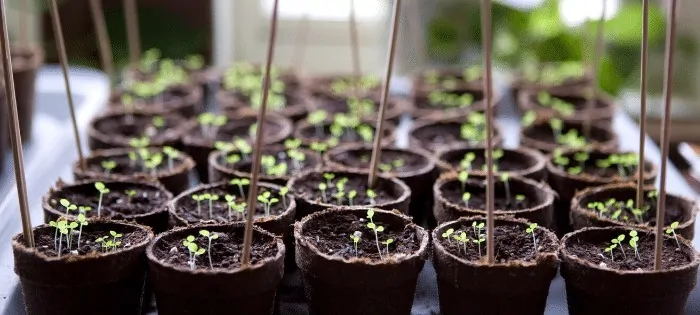
Peat Moss Disadvantages
Considering the flip side of the coin, peat moss comes with certain drawbacks that the gardening community has debated for a long time. A few of these include:
1. Environmental Implications
A major con of peat moss is its unsustainable cultivation from bogs. The process destroys living organisms and releases huge amounts of carbon dioxide.
It is known that the additional carbon dioxide in the air contributes to pollution and depletion of the ozone layer.
Since peat moss is a compressed moss that is pulled out of bogs, it requires the removal of living moss that grows on top of it, killing the bog ecosystems worldwide. This disturbs the natural habitat, leading to the displacement of flora and fauna.
Therefore, scientists and environmentalists consider peat bogs a distinguished yet fragile part of the environment. This raises the concern about the commercial production and usage of peat.
Alternate gardening staples to include coconut fibers. These fibers provide comparatively more sustainability when catering to gardening needs without it.
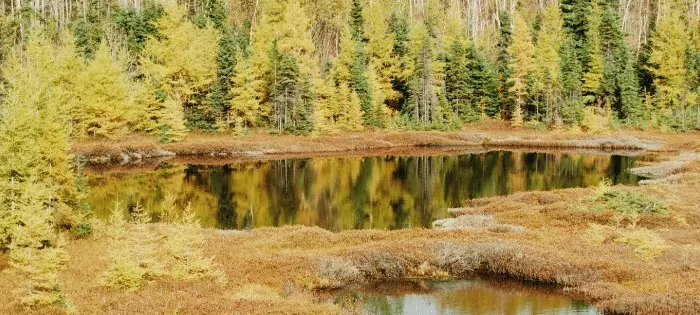
2. Nutrient Poor
To power the growth of a healthy garden, the soil has to be nutrient-enriched. However, compared to compost, peat moss does not contain any beneficial nutrition that is rich enough to nurture the growth of a luscious garden independently.
It is always used in combination with additional nutrients so that the nutrient-poor soil does not damage the structure of plants. Moreover, it doesn’t attract earthworms for the very same reason.
Earthworms are said to facilitate the process of aeration in the soil. However, without nutrients, they are not attracted to the soil.
As a result, the soil suffers from increased compaction, reducing the aeration within the soil bed. Eventually, plant roots start to suffer as the oxygen flow is restricted to the roots, affecting the overall plant growth.
3. Diseases
Peat moss goes through a long decaying process before its final formation. Any existence of diseases in the bog where peat harvesting begins can continue to multiply as peat develops.
These diseases resonate throughout the soil and transfer from one plant to another, damaging the garden.
Its water retention capability can better explain this; the water content in the soil eases the movement of pathogens from one plant root to another in the line.
This damage from peat moss diseases can hardly be identified since no exterior pests are exposed to the plant.
Should I use Peat Moss or Straw for Grass Seed?
Use peat moss instead of straw for grass seeds, as it has several benefits. The water retention of peat moss is high. It can hold 20 times its weight in water. This is important for grass seeds and seedlings as they must be kept moist at this stage.
A general misconception is that peat is sterile. It is not. Peat moss is the product of a decomposition process. Many diseases, pathogens, and other plant material can be found in peat moss.
The main benefit of using straw for grass seeds is that it is more affordable. In addition, grass is used as it keeps the soil warm. Lastly
What is Peat Moss Used For?
Peat moss is often used for the following reasons:
- Condition the soil for garden care
- As a replacement for straw
- To improve compost for pot plants and gardening
- To grow seedlings
1. Condition the soil for garden care
Peat moss helps condition garden soil. Add a small amount of peat moss to your garden before you plant anything. It will improve the soil texture and prevent the nutrients from running off. Dig an inch of the moss down by hand into 6 inches of soil (15 cm).
2. Straw Replacement
Spreading it over newly planted grass seeds rather than covering it with straw will help in the absorption of water quickly. It will also help the soil in the aeration process, giving better growth.
3. Improve Compost
If you want to improve your compost, peat moss is a wise option. Mix an inch of it for every 4 inches of compost, and this will elevate the nutrient-dense nature of compost, making it more crumbly and easier to spread. You can then use it as a fertilizer for your lawn and other gardening locations for healthy plant growth.
4. Grow Seedlings
Peat moss is great for growing seedlings. The reasons are that peat moss has extraordinary water-retention abilities and is well-draining at the same time. You can increase the aeration further by mixing peat with perlite. If you grow plants from seeds, you need to be careful that the seeds do not dry out. Once the seedlings sprouted, the soil must stay humid but not soggy.
In addition, peat has a uniform texture suited for growing seedlings. It is neither too dense nor chunky, so the small seedlings’ roots can grow well into the medium. In addition, peat moss offers good insulation from the cold and keeps the roots of plants warm. This is why it is often used outside.
Is Peat Moss Good for Vegetable Gardens?
Peat moss is great for vegetable gardens, as many vegetables love acidic soil. A good example is tomatoes. Strawberries and blueberries also grow well in this medium. The water-retaining abilities and the protection from the cold are further arguments for use in a vegetable garden.
FAQ
What is the difference between peat moss and cow manure?
It is acidic and repels water when it dries out completely. It is a partially decomposable material for plants. However, it is completely broken and has close to zero nutrient value.
Conversely, cow manure is an organic matter that continues to break down but has more nutrient content than peat moss. Both these materials are widely used as soil amends in horticulture but cannot be used as alternatives for one another as they stand with differing features.
What is coco peat moss?
Coco peat moss is an alternative to regular peat moss. It is commonly referred to as Coco Coir Peat and is an eco-friendly gardening material. It is made out of the fibrous material of the coconut, namely, coco coir, a by-product of the coconut industry. If you mix coco peat in soil, it offers surprising benefits.
Like peat moss, adding coco coir to the soil also aids in speeding the aeration process and increases water retention. However, coco coir requires less water than moss for hydration. Coco coir has an edge over peat in terms of sustainability and environment-friendliness.
Planet Natural talks about peat moss and coco coir, comparing the two thoroughly for a better understanding.
Is peat moss expensive?
Peat moss is commonly perceived as expensive since it is commercially used in large quantities, making the barrel amount highly expensive.
To meet your finances, avoid using the moss only and use it with your regular garden soil. This way, you’ll be able to cut the costs and enjoy the benefits of this gardening staple.
What is the difference between peat moss and peat humus?
Peat humus is the dead organic material that gathers in the lower layers of peat bogs. This type of peat is highly decomposable. It has excellent soil conditioning properties but a fairly low water-holding capacity as compared to peat moss. However, it is comparatively a pricier choice among the soil amendments available.
Closing remarks
Peat moss is an excellent gardening essential to boost your garden’s productivity. It has served the horticulture industry as a staple gardening material for decades.
Its prominent water retention capability, acidic pH value, and disinfected nature have made it a favorite regarding soil amends. However, compared to its renewable and eco-friendly alternatives, peat moss is criticized, questioning whether it should be as readily as it has been over the past century.

Daniel has been a plant enthusiast for over 20 years. He owns hundreds of houseplants and prepares for the chili growing seasons yearly with great anticipation. His favorite plants are plant species in the Araceae family, such as Monstera, Philodendron, and Anthurium. He also loves gardening and is growing hot peppers, tomatoes, and many more vegetables.

